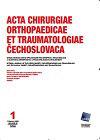IV型钛超敏反应:罕见还是罕见?
IF 0.4
4区 医学
Q4 ORTHOPEDICS
Acta chirurgiae orthopaedicae et traumatologiae Cechoslovaca
Pub Date : 2023-04-01
DOI:10.55095/achot2023/012
引用次数: 1
摘要
本文旨在总结目前对钛的超敏反应的认识。钛是一种因其优异的化学稳定性、耐腐蚀性、低比重和高强度而广泛应用于医学应用的材料。对金属的超敏反应通常是由IV型免疫病理反应引起的。对钛过敏反应的病例报告很少,但实际发生率预计会高得多,尤其是由于其检测存在问题。尽管皮肤贴剂试验被广泛接受并用于诊断多种金属(如镍)的超敏反应,但在对钛过敏的情况下,它是出了名的不可靠,这可能与钛及其盐的低经皮转运有关。淋巴细胞转化测试具有较高的灵敏度,但临床医生对其大多一无所知,也没有多少实验室能够进行。本综述提供了大量病例报告,结合上述事实,表明,对钛的超敏反应也应被视为与钛植入失败相关的非特异性问题的可能原因。关键词:钛,过敏,贴片试验,淋巴细胞转化试验。本文章由计算机程序翻译,如有差异,请以英文原文为准。
Type IV Titanium Hypersensitivity: Rare, or Rarely Detected?
The presented review aims to summarize the current knowledge of hypersensitivity to titanium - a material widely used in medical applications thanks to its exceptional chemical stability, resistance to corrosion, low specific weight and high strength. The hypersensitivity to metals is usually caused by the Type IV immunopathological reaction. Case reports on allergic reactions to titanium are rare but the actual occurrence can be expected to be much higher, especially due to its problematic detection. Although cutaneous patch tests are widely accepted and used for the diagnosis of hypersensitivity of numerous metals (e.g. Ni), it is notoriously unreliable in case of allergies to titanium, which may be associated with the low percutaneous transport of titanium and its salts. The Lymphocyte Transformation Test has superior sensitivity but it remains mostly unknown among clinicians and there are not many laboratories capable of performing it. This review presents numerous case reports indicating, in combination with the above-mentioned facts, that hypersensitivity to titanium should be considered as a possible cause also in non-specific problems associated with titanium implant failure. Key words: titanium, allergy, patch test, lymphocyte transformation test.
求助全文
通过发布文献求助,成功后即可免费获取论文全文。
去求助
来源期刊
CiteScore
0.70
自引率
25.00%
发文量
53
期刊介绍:
Editorial Board accepts for publication articles, reports from congresses, fellowships, book reviews, reports concerning activities of orthopaedic and other relating specialised societies, reports on anniversaries of outstanding personalities in orthopaedics and announcements of congresses and symposia being prepared. Articles include original papers, case reports and current concepts reviews and recently also instructional lectures.

 求助内容:
求助内容: 应助结果提醒方式:
应助结果提醒方式:


